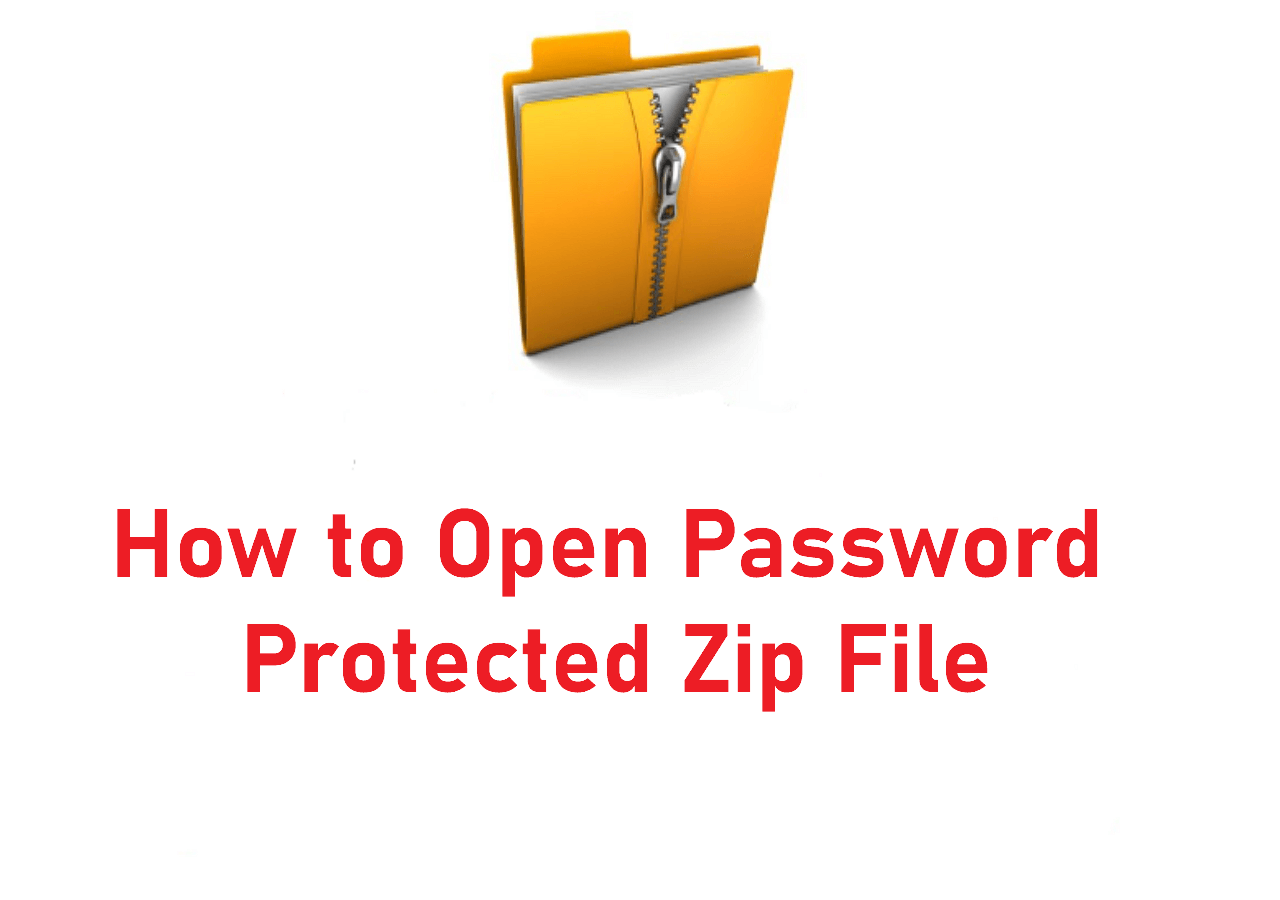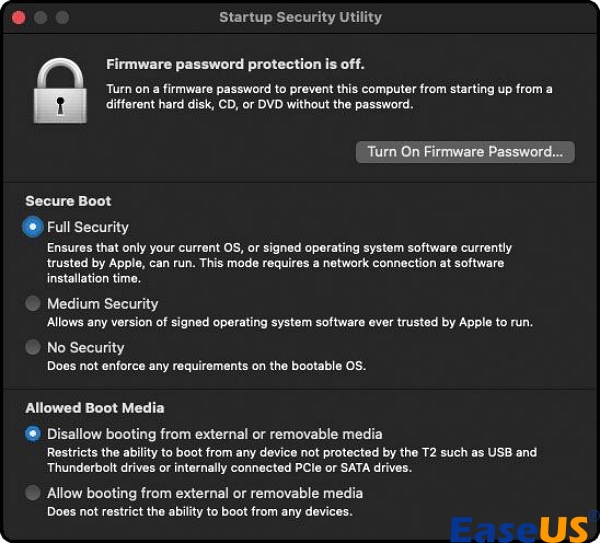Table of Contents
![]() About the Author
About the Author
![]() Related Posts
Related Posts

AI-Enhanced
File Repair
Repair corrupted files and enhance file quality!
Key methods in this post:
- Password Protect Your Mac Files with Disk Utility
- Password Protect Your Mac Files with Terminal
- Set A Firmware Password
- Encrypt Your File with File Vault
- Activate A Screensaver Password
Protecting your data on a Mac is critical for shielding privacy and secrecy. One effective method is to password protect file Mac. In this detailed article, we'll take you through many options for adding a layer of protection to your crucial documents.
We've covered you, from using built-in tools like Disk Utility and Terminal to indulging in simple methods. In addition, we'll provide specific guidance on fixing corrupted files using the excellent EaseUS Fixo File Repair. Let's delve into further details!
Method 1. Password Protect Your Mac Files with Disk Utility
Protect your sensitive data by password-protecting folders on your Mac using Disk Utility. Disk Utility, a built-in feature on your Mac, makes the procedure easier. Follow these simple steps to protect your folders:
Step 1. Launch Finder and click on Applications > Utilities > Disk Utility.

Step 2. Within Disk Utility, choose "File" and hover over "New Image."

Step 3. Select "Image From Folder" from the choices.
Step 4. Select the folder you want to secure and click "Choose."

Step 5. Depending on your security requirements, you may choose between 128-bit and 256-bit AES encryption.

Step 6. Enter and verify your Password to ensure its strength.
Step 7. Choose "read/write" from the drop-down box next to Image Format.
Step 8. Save the folder disk image (suffix.dmg) and click "Done" when finished.
Refer to this post when you find it difficult to open password-protected files:
Open Password Protected Zip File [100% Working]
Data Recovery is not a challenge anymore. EaseUS serves as a dependable data recovery application to retrieve lost data within simple clicks.

Method 2. Password Protect Your Mac Files with Terminal
Consider password protect file Mac using the Terminal on macOS. You may quickly build password-protected zip archives using the zip command with encryption settings. Here's a step-by-step tutorial to assist you with the process:
Step 1. Open Terminal on your Mac. You may locate it in the "Applications > Utilities" folder or utilize Spotlight by hitting Command + Spacebar and entering "Terminal."
Step 2. Use the "cd" command to go to the directory that contains the folder you wish to compress and password-protect.
Step 3. To generate a password-protected zip archive, use the following Command: zip -er archive.zip folder/. Replace "archive.zip" with the desired archive name and "folder/" with the folder to compress.
Step 4. After performing the Command, Terminal will ask you to provide a password for the archive. Type your Password securely.

Method 3. Set A Firmware Password
Turn on a firmware password to improve the security of your Mac, providing an extra layer of protection that prevents unwanted access from external devices at startup or while booting. Follow these simple steps to set up a firmware password:
Step 1. Restart your Mac and press "Command + R" until the Utility window displays.
Step 2. From the Utilities menu, choose "Startup Security Utility" or "Firmware Password Utility".
Step 3. To enable the option, choose "Turn On Firmware Password."

Step 4. Enter your firmware password and then click "Set Password." It is critical to remember this Password for future access.
Step 5. Exit the utility and click on Apple menu > Restart to restart your Mac.
Method 4. Encrypt Your File with File Vault
Protect your data even further by encrypting your disc by turning on FileVault. This approach protects your data by encrypting the whole drive, which prevents illegal access. Follow these simple steps to activate FileVault:
Step 1. To launch FileVault, go to Apple menu > System Settings, then "Privacy & Security," and finally FileVault.

Step 2. Click "Turn On." Enter your password when asked.
Step 3. Choose your chosen method for unlocking the disk and restoring your lost login password:
•➡️ iCloud Account: Choose "Allow my iCloud account to unlock my disk" if you already use iCloud. If iCloud is not already in use, choose "Set up my iCloud account to reset my password."
• ➡️Recovery Key: Select "Create a recovery key and do not use my iCloud account." Please write down the recovery key and keep it safe.
Step 4. Click "Continue."
Method 5. Activate A Screensaver Password
Improve your Mac's security by setting up a screensaver password, which requires password verification every time your machine awakens from sleep or plays the screensaver. Follow the steps below:
Step 1. Click the Apple symbol in the upper-left corner of your screen, then click "System Settings."
Step 2. Access the "Lock Screen" tab to access screen lock settings.

Step 3. Toggle the option next to "Require password after screen saver begins or display is turned off," to activate password protection, enable the option.
Pro Tips: How to Repair Corrupted Zip Files
In the unfortunate case that you find a damaged Zip file, the EaseUS Fixo File Repair program is a solid remedy. This program is helpful in repairing zip file that have structural issues or fail to open, guaranteeing a smooth recovery procedure.
Let's unfold some of the key features and scenarios in which you can utilize the tool:
Key Features of EaseUS Fixo File Repair:
- EaseUS Fixo File Repair claims to fix several sensitive ZIP file formats and solve WinRAR errors like unexpected end of archive.
- The tool can quickly repair corrupted files on Mac that are unreadable or not opening to preserve valuable data.
- The software's simple interface makes ZIP file repair and restoration easy for Mac users and solve unable to expand Zip file Mac error 79 and more.
EaseUS Fixo File Repair provides a flawless Zip file recovery experience. Share this useful information on social media to help others suffering similar issues.
FAQs on Password Protect File Mac
Following are some questions users search for when facing the problem of password-protecting Mac files:
1. How do you Password-protect a File folder on a Mac?
Follow the steps below to password-protect a file folder on Mac:
- Launch Finder and choose Applications > Utilities > Disk Utility. Press Command + Spacebar and type "Disk Utility." to use Spotlight.
- Select "File" and hover over "New Image." in Disk Utility.
- Choose "Image From Folder". Select the folder to secure and click "Choose." Verify your Password for security. Click "Done" after saving suffix.dmg.
2. How can I lock a File on my Mac?
You may lock files and folders on Mac in a variety of ways. Utilize the Terminal, Disk Utility, and FileVault to password-protect files on Mac.
3. How do I Password-protect a PDF on a Mac?
Follow the steps below to password-protect a PDF on a Mac:
- Open a PDF on Mac Preview. Choose file> Export. Enter a new PDF name to produce a password-protected copy without password-protecting the original.
- Click Permissions, then select "Require Password to Open Document."
- Enter an Owner Password and retype it to confirm. Click Save after Applying.
Conclusion
Maintaining strong Mac security is essential for protecting crucial files. There are several ways to secure your data, from Disk Utility encryption to password protect file mac. These solutions provide a complete security plan that meets Mac users' different demands. If a Zip file is damaged, EaseUS Fixo File Repair will help recover it. Adopt these security measures to protect your data and Mac against illegal access. Share this useful information to empower and safeguard Mac users.
Was This Page Helpful?
About the Author
Finley is interested in reading and writing articles about technical knowledge. Her articles mainly focus on file repair and data recovery.